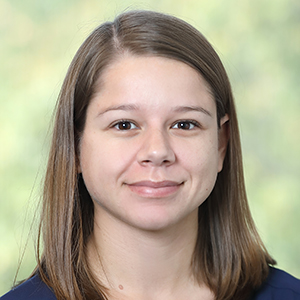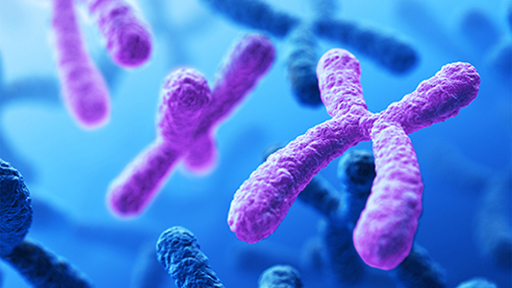Prenatal Genomic Testing
Turriff AE, Annunziata CM, Malayeri AA, Redd B, Pavelova M, Goldlust IS, Rajagopal PS, Lin J, Bianchi DW. Prenatal cfDNA Sequencing and Incidental Detection of Maternal Cancer.N Engl J Med. 2024 Dec 5;391(22):2123-2132. doi: 10.1056/NEJMoa2401029.PMID: 39774314
Turriff AE, Bianchi DW. Oncologists must act to manage cancer detected through prenatal screening. Nat Rev Cancer. 2024 Oct;24(10):649-650. doi: 10.1038/s41568-024-00719-1.PMID: 38951713
Turriff A, Miner SA, Annunziata CM, Bianchi DW. Patients' perspectives on prenatal screening results that suggest maternal cancer: A qualitative analysis. Prenat Diagn. 2023 Aug;43(9):1101-1109. doi: 10.1002/pd.6406. Epub 2023 Jul 21.PMID: 37409892
Turriff AE, Annunziata CM, Bianchi DW. Prenatal DNA Sequencing for Fetal Aneuploidy Also Detects Maternal Cancer: Importance of Timely Workup and Management in Pregnant Women. J Clin Oncol. 2022 Aug 1;40(22):2398-2401. doi: 10.1200/JCO.22.00733. Epub 2022 Jun 15.PMID: 35704839
Hui L, Bianchi DW. Fetal fraction and noninvasive prenatal testing: What clinicians need to know. Prenat Diagn. 40: 155-163. 2020.
Bianchi DW, Chiu RWK. Sequencing of circulating cell-free DNA during pregnancy. N Engl J Med. 379(5): 464-473. 2018.
Wilkins-Haug L, Zhang C, Cerveira E, Ryan M, Mil-Homens A, Zhu Q, Reddi H, Lee C, Bianchi DW. Biological explanations for discordant noninvasive prenatal test results: preliminary data and lessons learned. Prenat Diagn. 38(6): 445-458, 2018.
Bianchi DW. Unusual prenatal genomic results provide proof-of-principle of the liquid biopsy for cancer screening. Clin Chem. 64(2): 254-256, 2018.
Bianchi DW. Cherchez la femme: maternal incidental findings can explain discordant prenatal cell-free DNA sequencing results. Genet Med. 20(9): 910-917, 2018.
Pertile MD, Halks-Miller M, Flowers N, Barbacioru C, Kinnings SL, Vavrek D, Seltzer WK, Bianchi DW. Rare autosomal trisomies, revealed by maternal plasma DNA sequencing, suggest increased risk of feto-placental disease. Sci Transl Med. Aug 30. 2017. 9(405).pii:eaan1240.doi:10.1126/scitranslmed.aan1240.
Hui L, Bianchi DW. Noninvasive Prenatal DNA Testing: The Vanguard of Genomic Medicine. Annu Rev Med. 68:459-472. 2017.
Snyder HL, Curnow KJ, Bhatt S, Bianchi DW. Follow-up of multiple aneuploidies and single monosomies detected by noninvasive prenatal testing: implications for management and counseling. Prenat Diagn. 36(3):203-9. 2016.
Bianchi DW, Chudova D, Sehnert AJ, Bhatt S, Murray K, Prosen TL, Garber JE, Wilkins-Haug L, Vora NL, Warsof S, Goldberg J, Ziainia T, Halks-Miller M. Noninvasive Prenatal Testing and Incidental Detection of Occult Maternal Malignancies. JAMA. 314(2):162-9. 2015.
Bianchi DW. Pregnancy: Prepare for unexpected prenatal test results. Nature. 522(7554):29-30. 2015.
Bianchi DW, Parker RL, Wentworth J, Madankumar R, Saffer C, Das AF, Craig JA, Chudova DI, Devers PL, Jones KW, Oliver K, Rava RP, Sehnert AJ; CARE Study Group. DNA sequencing versus standard prenatal aneuploidy screening. N Engl J Med. 370(9):799-808. 2014.
Taglauer ES, Wilkins-Haug L, Bianchi DW. Review: cell-free fetal DNA in the maternal circulation as an indication of placental health and disease. Placenta. 35 Suppl:S64-8. 2014.
Rava RP, Srinivasan A, Sehnert AJ, Bianchi DW. Circulating fetal cell-free DNA fractions differ in autosomal aneuploidies and monosomy X. Clin Chem. 60(1):243-50. 2014.
Bianchi DW, Prosen T, Platt LD, Goldberg JD, Abuhamad AZ, Rava RP, Sehnert AJ; MatErnal BLood IS Source to Accurately diagnose fetal aneuploidy (MELISSA) Study Group. Massively parallel sequencing of maternal plasma DNA in 113 cases of fetal nuchal cystic hygroma. Obstet Gynecol. 121(5):1057-62. 2013.
Srinivasan A, Bianchi DW, Huang H, Sehnert AJ, Rava RP. Noninvasive detection of fetal subchromosome abnormalities via deep sequencing of maternal plasma. Am J Hum Genet. 92(2):167-76. 2013.
Bianchi DW. From prenatal genomic diagnosis to fetal personalized medicine: progress and challenges. Nat Med. 18(7):1041-51. 2012.
The Prenatal Transcriptome
Lee SE, Baxter LL, Duran MI, Morris SD, Mosley IA, Fuentes KA, Pennings JLA, Guedj F, Bianchi DW. Analysis of genotype effects and inter-individual variability in iPSC-derived trisomy 21 neural progenitor cells. Hum Mol Genet. 2024 Nov 13:ddae160. doi: 10.1093/hmg/ddae160. Online ahead of print. PMID: 39533854
Edlow AG, Guedj F, Sverdlov D, Pennings JLA, Bianchi DW. Significant effects of maternal diet during pregnancy on the murine fetal brain transcriptome and offspring behavior. Front Neurosci. Dec 17. 2019. 13:1335. Doi: 10.3389/fnins.2019.01335.
Bianchi DW. Turner syndrome: New insights from prenatal genomics and transcriptomics. Am J Med Genet C. Jan 31. 2019. doi: 10.1002/ajmg.c.31675.
Tarui T, Kim A, Flake A, McClain L, Stratigis JD, Fried I, Newman R, Slonim DK, Bianchi DW. Amniotic fluid transcriptomics reflects novel disease mechanisms in fetuses with myelomeningocele. Am J Obstet Gynecol. (17)30864-5. 2017.
Zwemer LM, Nolin SL, Okamoto PM, Eisenberg M, Wick HC, Bianchi DW. Global transcriptome dysregulation in second trimester fetuses with FMR1 expansions. Prenat Diagn. 37(1):43-52. 2017.
Edlow AG, Hui L, Wick HC, Fried I, Bianchi DW. Assessing the fetal effects of maternal obesity via transcriptomic analysis of cord blood: a prospective case-control study. BJOG. 123(2):180-9. 2016.
Edlow AG, Slonim DK, Wick HC, Hui L, Bianchi DW. The pathway not taken: understanding 'omics data in the perinatal context. Am J Obstet Gynecol. 213(1):59.e1-172. 2015.
Zwemer LM, Bianchi DW. The amniotic fluid transcriptome as a guide to understanding fetal disease. Cold Spring Harb Perspect Med. 5(4). 2015.
Hui L, Wick HC, Edlow AG, Cowan JM, Bianchi DW. Global gene expression analysis of term amniotic fluid cell-free fetal RNA. Obstet Gynecol. 121(6):1248-54. 2013.
Hui L, Wick HC, Moise KJ Jr, Johnson A, Luks F, Haeri S, Johnson KL, Bianchi DW. Global gene expression analysis of amniotic fluid cell-free RNA from recipient twins with twin-twin transfusion syndrome. Prenat Diagn. 33(9):873-83. 2013.
Hui L, Slonim DK, Wick HC, Johnson KL, Koide K, Bianchi DW. Novel neurodevelopmental information revealed in amniotic fluid supernatant transcripts from fetuses with trisomies 18 and 21. Hum Genet. 131(11):1751-9. 2012.
Edlow AG, Bianchi DW. Tracking fetal development through molecular analysis of maternal biofluids. Biochim Biophys Acta. 1822(12):1970-80.
Hui L, Slonim DK, Wick HC, Johnson KL, Bianchi DW. The amniotic fluid transcriptome: a source of novel information about human fetal development. Obstet Gynecol. 119(1):111-8. 2012.
Prenatal Therapy for Down Syndrome
Adams AD, Lin J, Bianchi DW, Bishop L, Sato T, Baxter LL, Hoffmann V, Koehly L, Guedj F. Embryonic statistical analyses reveal 2 growth phenotypes in mouse models of Down syndrome. Am J Obstet Gynecol. 2024 Feb; 230(2):258.e1-258.e11. doi: 10.1016/j.ajog.2023.07.056. Epub 2023 Aug 6.PMID: 37544351
Guedj F, Kane E, Bishop LA, Pennings JLA, Herault Y, Bianchi DW.The Impact of Mmu17 Non-Hsa21 Orthologous Genes in the Ts65Dn Mouse Model of Down Syndrome: The Gold Standard Refuted. Biol Psychiatry. 2023 Jul 1;94(1):84-97. doi: 10.1016/j.biopsych.2023.02.012. Epub 2023 Mar 14. PMID: 37074246
Adams AD, Hoffmann V, Koehly L, Guedj F, Bianchi DW.Novel insights from fetal and placental phenotyping in 3 mouse models of Down syndrome. Am J Obstet Gynecol. 2021 Sep;225(3):296.e1-296.e13. doi: 10.1016/j.ajog.2021.03.019. Epub 2021 Mar 22. PMID: 33766516
Guedj F, Siegel AE, Pennings JLA, Alsebaa F, Massingham LJ, Tantravahi U, Bianchi DW.Apigenin as a Candidate Prenatal Treatment for Trisomy 21: Effects in Human Amniocytes and the Ts1Cje Mouse Model. Am J Hum Genet. 2020 Nov 5;107(5):911-931. doi: 10.1016/j.ajhg.2020.10.001. Epub 2020 Oct 23. PMID: 33098770
Antonarakis SE, Skotko BG, Rafii MS, Strydom A, Pape SE, Bianchi DW, Sherman SL, Reeves RH. Down syndrome. Nat Rev Dis Primers. Feb 6. 2020; 6(1):9. doi:10.1038/s41572-019-0143-7.
Lee SE, Duran-Martinez M, Khantsis S, Bianchi DW, Guedj F. Challenges and opportunities for translation of therapies to improve cognition in Down syndrome. Trends Mol Med. 26(2): 150-169. 2020.
Adams AD, Guedj F, Bianchi DW. Placental development and function in trisomy 21 and mouse models of Down syndrome: Clues for studying mechanisms underlying atypical development. Placenta. 89: 58-66. 2020.
Tarui T, Im K, Madan N, Madankumar R, Skotko BG, Schwartz A, Sharr C, Ralston SJ, Kitano R, Akiyama S, Yun HJ, Grant E, Bianchi DW. Quantitative MRI analyses of regional brain growth in living fetuses with Down syndrome. Cereb Cortex. 30 (1): 382-390. 2020.
Aziz NM, Guedj F, Pennings JLA, Olmos-Serrano JL, Siegel A, Haydar TF, Bianchi DW. Lifespan analysis of brain development, gene expression and behavioral phenotypes in the Ts1Cje, Ts65Dn and Dp(16)1/YeY mouse models of Down syndrome. Dis Model Mech. Jun 12. 2018. 11(6).pii:dmm031013. Doi:10.1242/dmm.031013.
de Wert G, Dondorp W, Bianchi DW. Fetal therapy for Down syndrome: an ethical exploration. Prenat Diagn. 37(3):222-228. 2017.
Ferrés MA, Bianchi DW, Siegel AE, Bronson RT, Huggins GS, Guedj F. Perinatal Natural History of the Ts1Cje Mouse Model of Down Syndrome: Growth Restriction, Early Mortality, Heart Defects, and Delayed Development. PLoS One. Dec 8;11(12). 2016.
Guedj F, Pennings JL, Massingham LJ, Wick HC, Siegel AE, Tantravahi U, Bianchi DW. An Integrated Human/Murine Transcriptome and Pathway Approach To Identify Prenatal Treatments For Down Syndrome. Sci Rep. 6:32353. 2016.
Goodliffe JW, Olmos-Serrano JL, Aziz NM, Pennings JL, Guedj F, Bianchi DW, Haydar TF. Absence of Prenatal Forebrain Defects in the Dp(16)1Yey/+ Mouse Model of Down Syndrome. J Neurosci. 36(10):2926-44. 2016.
Guedj F, Pennings JL, Ferres MA, Graham LC, Wick HC, Miczek KA, Slonim DK, Bianchi DW. The fetal brain transcriptome and neonatal behavioral phenotype in the Ts1Cje mouse model of Down syndrome. Am J Med Genet A. 167A(9):1993-2008. 2015.
Guedj F, Bianchi DW, Delabar JM. Prenatal treatment of Down syndrome: a reality? Curr Opin Obstet Gynecol. Apr;26(2):92-103. 2014.
Guedj F, Bianchi DW. Noninvasive prenatal testing creates an opportunity for antenatal treatment of Down syndrome. Prenat Diagn. 33(6):614-8. 2013.








